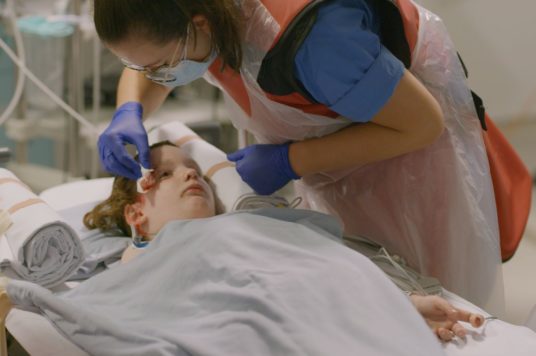12-year-old girl makes ‘miracle recovery’ with help of St George’s teams after car crash
Last summer 12-year-old Lily Bannister was involved in a car crash that could have led to life-changing injuries or have even been fatal.
Lily was immediately rushed to St George’s emergency department (ED) by Kent, Surry and Sussex air ambulance, part of London’s major trauma system response.
Lily’s mother, Kate Mellor, 42, recalls feeling terrified not knowing whether Lily had brain damage. She said:
“Every emotion you could think of, I was feeling it. My heart was going a thousand miles an hour.”
Lily was crossing a busy road on her way home from a local park when she was hit by a car travelling at 50mph. She had two seizures at the scene and was straight away seen by St George’s ED department which is one of 11 adult and children’s major trauma centres in the UK.
Kate added:
“Lily was taken to intensive care and there were so many tubes coming out of her, and she was covered in cuts and bruises. It was so scary.”
Top doctors at St George’s put Lily in an induced coma while they established the extent of her injury with CT scans and X-rays.
Orthopaedic surgeons led by consultant surgeon Omar worked out a plan to treat her hip fracture by fixing screws to a plate to bring the bones together. It was a complicated operation due to her small bones and Omar had to revert to plan B using screws alone. Luckily, Lily was in the right place with St George’s treating over 130,000 children a year, and their children’s services being rated outstanding by the CQC.
Dr Emmett O’Flaherty, one of the senior doctors involved in Lily’s operation said:
“Surgery was done using X-ray guidance so we could see that the screws were going into the bone correctly. This is important, as if you don’t get things back to exactly how they were patients can end up with one leg longer than the other.”
A week after her successful operation, Lily started physiotherapy to get her moving again. Acute paediatric occupational therapist Amy Willis worked on Lily’s rehabilitation, she said:
“Lily was finding physiotherapy painful due to her many fractures, she was getting headaches, dizziness and nausea, but once it clicked, she just flew, and was discharged relatively quickly.”
Around six weeks after Lily was discharged from hospital her shoulder and wrist injuries fully healed, by the end of October she no longer needed to use her wheelchair.


